UC Gardening Blogs
Disinfectants are pesticides–so use safely!
What do “pest control” and public health campaigns against SARS Cov-2 have in...
Nature Will Have Its Way
I have just returned from a trip that included Angkor Wat in Cambodia. One of the most interesting things about ancient ruins is the state they are discovered in. This particular site is about 900 years old in a very hot location. The excavations seem both incomplete and ongoing and it is very conducive to natural growth. As hot as it is, I had the feeling that I should keep moving before I took root myself. It is very common to seem plants growing out of the crevices in and between stones. Because the environment is so friendly to plant-life, it seems like the structures have to be cleared regularly so they are not completely covered by various plants. In fact, the monuments are covered up and the process of discovery involved clearing the overgrowth.
As you can tell from the picture, the trees are enormous – and there are several different kinds of them. There seems to be some controversy about just what they are. One of the contenders at Ta Prohm, one of the temple sites at Angkor, is Tetrameles nudiflora – as pictured. But from what I can tell the dominant trees are not clearly identified. For those interested, I googled Ta Prohm and went for the fine print. I can't figure out why the tree names are so indefinite and I wasn't in Cambodia long enough to inquire on-site.
I have had the opportunity to see other amazing ruins on other trips, such as Petra and Machu Picchu, and they all have their own stories to tell. Even though they are made of large stone, people will have their way of working around the solidness and the gigantic amounts of labor it took to place the stones in the structures. Sometimes this involves moving them many miles from where they are mined. It is really amazing just what religious devotion can get people to create.
For me, Angkor Wat has the most intimate relationship between the temple structure and the natural environment. I realize that I am influenced by the recency of my visit because they all seem a bit miraculous. Not only is the building astounding, but the carvings are beautiful - filled with stories about the lives of the builders and frequently included painting; 900 years is too long to expect a paint job to last, especially exposed to the elements, so the basic color is stone gray. They are works of supreme devotion. Left unattended, nature makes its claim. It is not as if nature completely overcomes the structures, but as if they find a new kind of symbiosis that enhances the wonder of each. The temples and other structures give room for sharing the space while both are vulnerable to the effects of time. The structures deteriorate and the plant growth adds a different kind of life, embracing and amplifying the spirituality in both.
As you can tell, Angkor Wat seems transcendent and it wouldn't be the same without the trees and other plants growing along and within the stone. Not a bad place to spend a vacation.

photo by Lowell Cooper
Good Advice & Growing Makes me Happy
Editor's note: Master Gardeners are keeping busy in their own gardens during Napa County's...
Using hydrogels to develop a yellowjacket bait
Many parks, recreational areas, and outdoor venues in California are home to yellowjacket wasps...
UC Davis Doctoral Candidate Brendon Boudinot Shares Expertise on Ants
When doctoral candidate and entomologist extraordinaire Brendon Boudinot delivered his exit seminar...
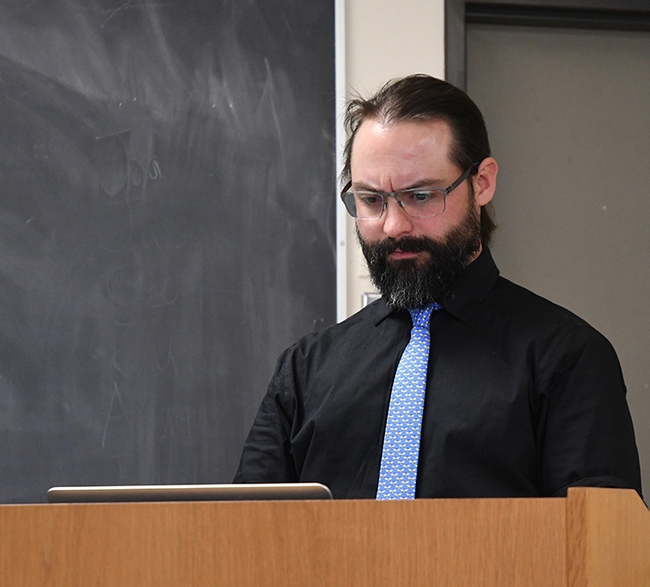
Doctoral candidate Brendon Boudinot getting ready to present his exit seminar. (Photo by Kathy Keatley Garvey)
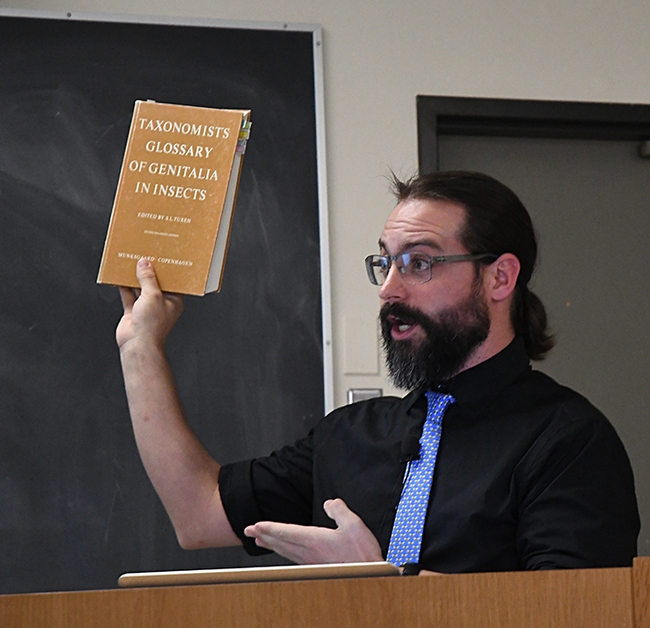
Ant specialist Brendon Boudinot recommends one of his dog-eared textbooks. (Photo by Kathy Keatley Garvey)
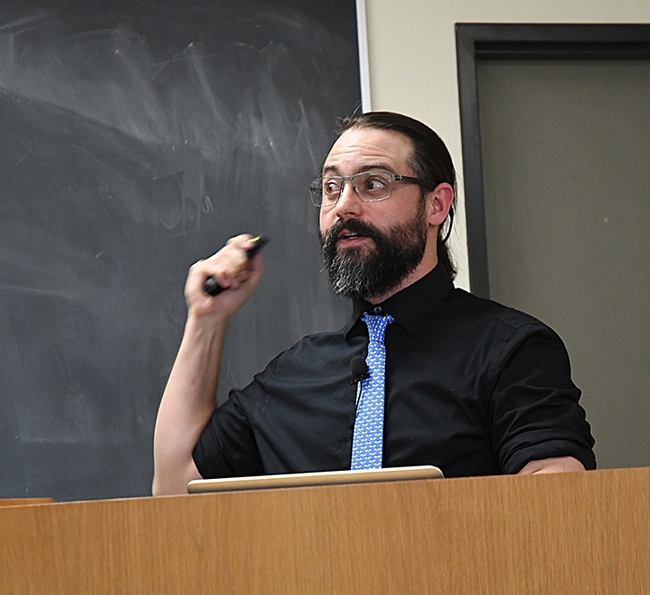
Brendon Boudinot tells the crowd we all share a common ancestor. (Photo by Kathy Keatley Garvey)
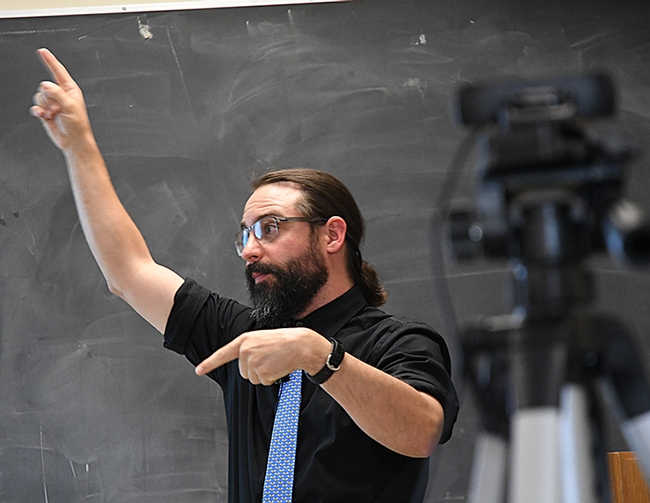
"Okay, we don't maybe generally care about the abdomen and maybe we don't care that much about insect genitalia, but I care about insect genitalia and a lot of insects do, too."--Brendon Boudinot (Photo by Kathy Keatley Garvey)
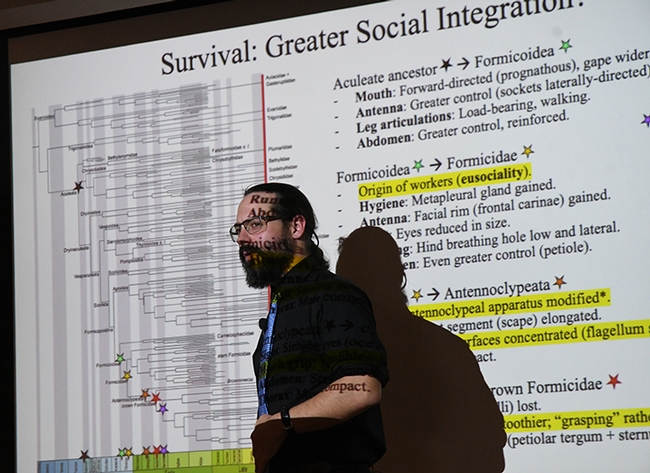
Text of Brendon Boudinot's PowerPoint slides onto his face. (Photo by Kathy Keatley Garvey)
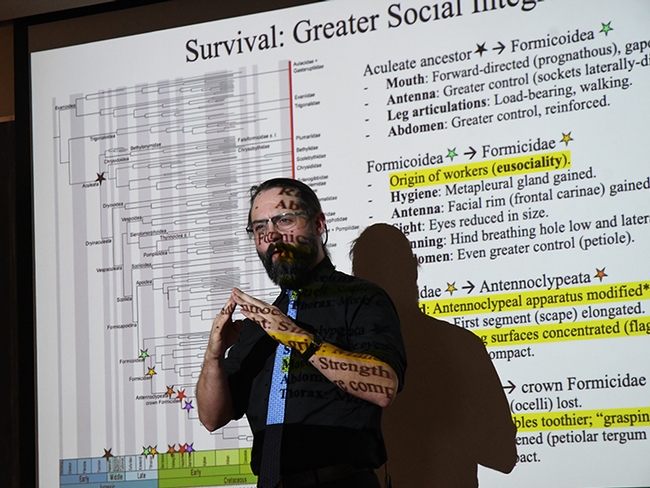
Brendon Boudinot drew acclaim, admiration and applause at his exit seminar. (Photo by Kathy Keatley Garvey)



